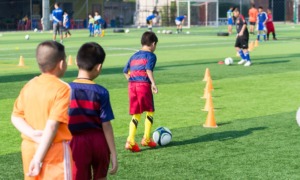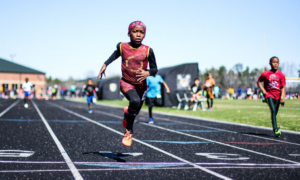 When the U.S. Men’s National Team was eliminated from the World Cup in October, it brought to light the youth pay-to-play structure in the United States. The current youth system financially limits access to the game in urban and rural areas of the country.
When the U.S. Men’s National Team was eliminated from the World Cup in October, it brought to light the youth pay-to-play structure in the United States. The current youth system financially limits access to the game in urban and rural areas of the country.
As a product of this system, I’m forever grateful to my family for making the sacrifices they made for me to follow my love of the game. Their support provided me with the opportunity to play youth soccer at a high level growing up and eventually at a Division I university.
It was not until I began my work at Soccer in the Streets that my eyes were opened to what a money grab youth soccer and youth sports in general are in the United States. A lot of children will never have the same access to the sport that I did, which ultimately molded me into the woman I am today. Soccer in the Streets is a social impact organization that levels the playing field for all and removes financial, racial and gender barriers.
Over the past few months we have all heard or read different opinions on the fix for U.S. soccer, but I truly believe we need to build from the bottom up: Build the culture, cut high costs and travel, provide access for all, provide top education for all coaches and actually do what every club says they do — foster player development.
The U.S. has taken models from other countries that are deemed successful but has not taken the time to build our own country’s culture. Given the size of the United States, this seems like a colossal task. We need to get our country to eat, breathe, sleep soccer from the youngest of ages and agree that our style of play does not need to be modeled after another country’s.
Don’t get me wrong, I love Pep and the Barcelona style of play, but are we in Spain? Do all our kids in our academies have access to elite performance environments from day one? Maybe one day, but for now we need to focus on establishing our own soccer cultural foundation instead of being an imposter. Do not even get me started on the build out line.
Before the age of 13, around the time of specialization, youth soccer should be played locally and the focus really should be on development instead of winning and losing. There is no need for a 10-year-old to be traveling cross-country to play in a soccer tournament when the same level of play can be found in their own backyard. This travel is associated with high costs, monetarily and timewise.
We also need to consider providing access to the sport locally through access to fields and places to play. What if every elementary school had a soccer pitch like they do in Iceland? Think about the soccer culture that would breed in a country our size.
At Soccer in the Streets, we have been fine-tuning our blueprint of the village model. In a nutshell, we activate in the schools and funnel those players in those neighborhoods into their own community or “village.” Most of these communities have had no or limited access to the sport. Ultimately, we would like these villages to be connected through a network of fields along our transit system to eliminate the issue of transportation and afford access to all.
All coaches, no matter the level, should be able to have access to quality coach education and development. If we truly want to build a soccer culture and develop our youth, we need to invest in the ones teaching the game. Also, player development should not just be something we like to mention in our club’s curriculum. It needs to be top priority, and recruitment of players should be prohibited in the developmental age groups. Develop locally, track progress and place better-qualified coaches with the younger age groups.
Lauren Glancy is a former teacher, coach and athletic director and is currently the director of programs for Soccer in the Streets, based in Atlanta. She holds a B.S.Ed. in health and physical education and an M.S. in sport pedagogy from the University of Georgia.






























